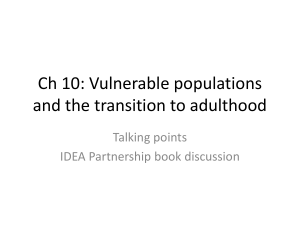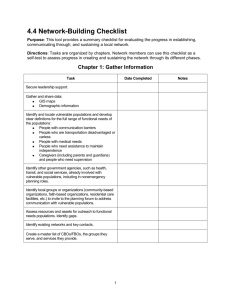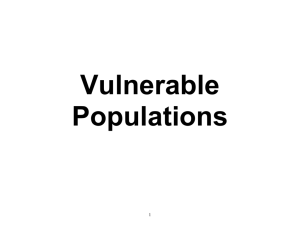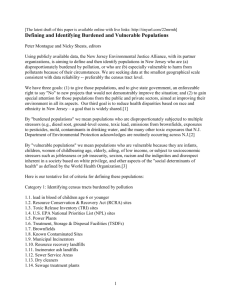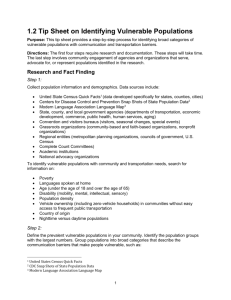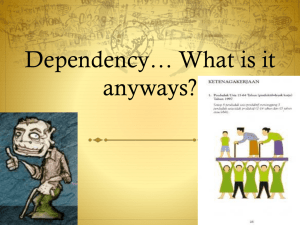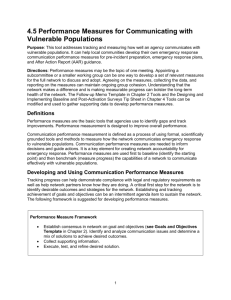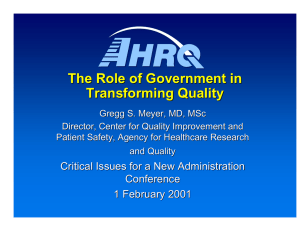3.5 Communicating with Vulnerable Populations Tip Sheet
advertisement
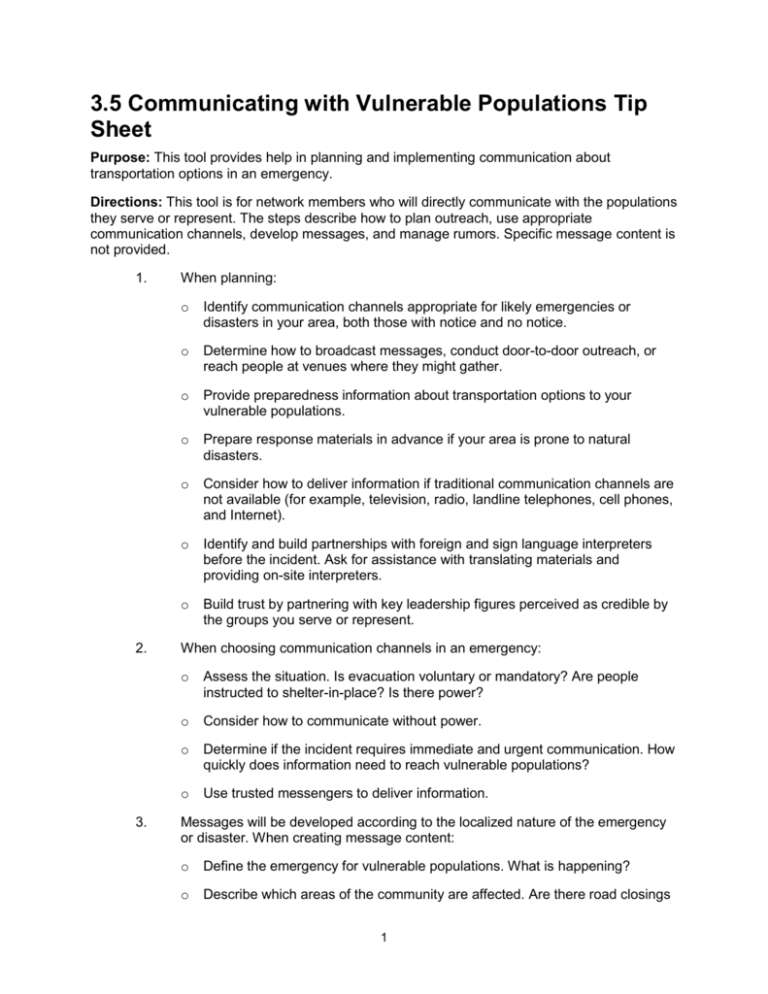
3.5 Communicating with Vulnerable Populations Tip Sheet Purpose: This tool provides help in planning and implementing communication about transportation options in an emergency. Directions: This tool is for network members who will directly communicate with the populations they serve or represent. The steps describe how to plan outreach, use appropriate communication channels, develop messages, and manage rumors. Specific message content is not provided. 1. 2. 3. When planning: o Identify communication channels appropriate for likely emergencies or disasters in your area, both those with notice and no notice. o Determine how to broadcast messages, conduct door-to-door outreach, or reach people at venues where they might gather. o Provide preparedness information about transportation options to your vulnerable populations. o Prepare response materials in advance if your area is prone to natural disasters. o Consider how to deliver information if traditional communication channels are not available (for example, television, radio, landline telephones, cell phones, and Internet). o Identify and build partnerships with foreign and sign language interpreters before the incident. Ask for assistance with translating materials and providing on-site interpreters. o Build trust by partnering with key leadership figures perceived as credible by the groups you serve or represent. When choosing communication channels in an emergency: o Assess the situation. Is evacuation voluntary or mandatory? Are people instructed to shelter-in-place? Is there power? o Consider how to communicate without power. o Determine if the incident requires immediate and urgent communication. How quickly does information need to reach vulnerable populations? o Use trusted messengers to deliver information. Messages will be developed according to the localized nature of the emergency or disaster. When creating message content: o Define the emergency for vulnerable populations. What is happening? o Describe which areas of the community are affected. Are there road closings 1 or other travel-related hazards? 4. 5. o Provide evacuation information and instructions. Are special instructions required for schools, nursing homes, and adult and child day care facilities? For parents, guardians, and caregivers? o Explain how people can stay safe or take protective action. o Explain what is being done to mitigate the incident. o Keep people informed. When developing messages: o Keep message content simple. Provide only the most critical information. o Write or speak in short sentences and plain language. o Use pictures to convey complex information. o Provide walking routes (maps with pictures of landmarks and arrows) to transit pick-up points. o Use maps with pictures of landmarks and arrows to indicate evacuation routes. o Make messages easy to read by using: o Serif fonts (such as Times New Roman or Garamond) o 16- or 18-point type o Lots of white space on written materials Adapt messages to specific audiences: o For people in the deaf or hard of hearing community, use a combination of captioning and sign language interpreting for the broadest reach. Also use text or Video Relay Services (video phone) messages. o For limited English proficient populations, translate messages. o For people who are blind or vision impaired, make written materials available in Braille, large print, and audio. o For low literacy populations, write at a fifth grade level or below. Use words with no more than two syllables. o For people living in rural and remote areas, use information that is relevant to their needs and experiences. For example, do not talk about public transportation when there is none. o To reach latchkey children, it will be helpful to include radio stations geared to all ages and social networking sites as well as text alerts, with messages geared to those who may be young and home alone. 2 6. Rumors around emergencies can cause people to panic or become afraid. To manage rumors: o Provide frequent updates with accurate information at a set time each day. o Provide a system and contact information for feedback; for example, if a message has gone out and is being misunderstood, how can it be corrected? o Actively correct misinformation that may be circulating in the media or among the public. o Build and maintain trust by giving honest information. If you don’t know the answer to a question say, “I don’t know, but I can find out.” o Provide information about how to access transportation, medical care, and shelters. o Explain the importance of self-care. o Provide information about re-entry and recovery. 3

